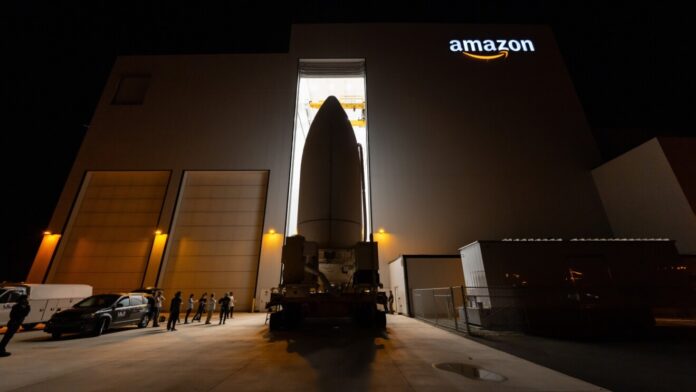Amazon plans to deploy a constellation of 3,236 satellites to provide high-speed internet to remote and underserved areas
Amazon took a major step forward in its plans to build a global satellite internet network on Sunday, successfully launching its first 27 operational satellites for Project Kuiper. The satellites were carried into low Earth orbit aboard a United Launch Alliance (ULA) Atlas V rocket from Cape Canaveral Space Force Station in Florida.
The launch marks the beginning of Amazon’s attempt to challenge SpaceX’s Starlink, the current leader in satellite-based broadband. Project Kuiper plans to deploy a constellation of 3,236 satellites to provide high-speed internet to remote and underserved areas. Under Federal Communications Commission (FCC) regulations, Amazon is required to launch half of the network — more than 1,600 satellites — by mid-2026.
The 27 satellites deployed Sunday form part of Amazon’s Kuiper 1 mission, and initial reports indicated that the spacecraft have successfully communicated with ground control and are operating as expected. Amazon previously conducted two prototype satellite launches last October to test hardware and communications systems.
“We’ve completed the first step toward deploying the Kuiper constellation,” said Rajeev Badyal, Project Kuiper’s vice president of technology, in a statement.
In April, Badyal called Kuiper satellites some of the most advanced ever built. “And every launch is an opportunity to add more capacity and coverage to our network,” he continued. “We’ve done extensive testing on the ground to prepare for this first mission, but there are some things you can only learn in flight, and this will be the first time we’ve flown our final satellite design and the first time we’ve deployed so many satellites at once.”
He added: “No matter how the mission unfolds, this is just the start of our journey, and we have all the pieces in place to learn and adapt as we prepare to launch again and again over the coming years.”
The Kuiper project, backed by more than $10 billion in investment, enters a market that has become increasingly competitive. SpaceX’s Starlink service currently operates over 7,000 satellites and claims more than 4.5 million users worldwide. Amazon’s launch comes years after Starlink began offering service, raising questions about how quickly Kuiper can scale and capture market share.
To accelerate deployment, Amazon has lined up 83 future rocket launches through agreements with ULA, Arianespace and Jeff Bezos’ Blue Origin. The company also signed a launch deal with SpaceX, although details of that arrangement have not been disclosed publicly.
Amazon plans to begin offering customer service by the end of 2025. It has developed several consumer terminals, including a standard model expected to cost under $400, with the goal of keeping service affordable. The company has not yet announced pricing for its broadband plans.
Sunday’s launch also highlights a growing area of tension between satellite operators and the scientific community. Large constellations have raised concerns about light pollution and the impact on astronomical observations. In response, Amazon said it has equipped its Kuiper satellites with anti-reflective coatings to minimize their visibility from Earth.
The Project Kuiper deployment is expected to ramp up over the next two years. The company said it would continue to validate satellite performance during the coming months before beginning commercial service.
The launch was originally scheduled for earlier in April but was delayed by a technical issue with ground equipment. Sunday’s flight was the first Atlas V mission for Kuiper and one of the final flights for the workhorse rocket, which is being retired as ULA transitions to its next-generation Vulcan Centaur vehicle.
While Amazon is now beginning to put hardware in orbit, the company faces a compressed timeline and significant logistical hurdles. In addition to manufacturing thousands of satellites, Amazon must scale its ground network and complete regulatory approvals in various countries — all while Starlink continues to expand and new competitors like OneWeb and Telesat also vie for global internet customers.
Still, Amazon executives have emphasized that the company’s massive cloud business, Amazon Web Services (AWS), could give it an advantage in linking Kuiper to enterprise and government customers in addition to households.
Amazon said that it may launch five additional Kuiper missions this year.

